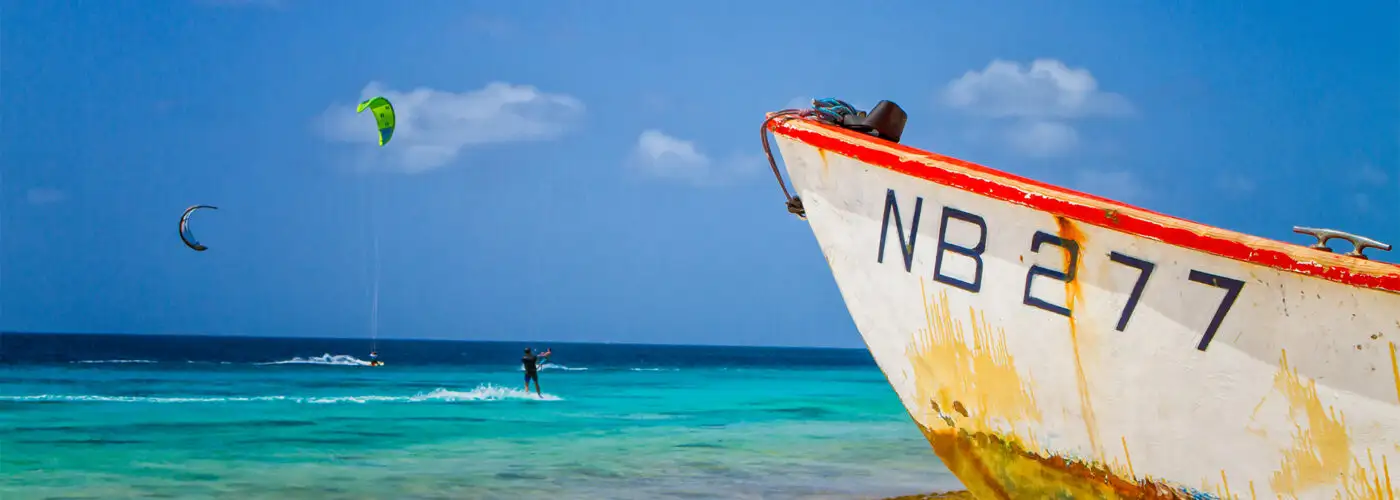Many islands in the Caribbean attract a certain kind of traveler: one with a taste for massive all-inclusive resorts that pack restaurants and pools onto a stretch of beach, so that guests rarely (if ever) leave the property. There is a little-known Caribbean paradise, however, that breaks that mold—with nary an all-inclusive in sight, and very few hotel options with over 90 rooms. Instead, adventurers seek out Bonaire to enjoy the eco-friendly island alongside the locals; scuba diving and snorkeling protected reefs, dining at delicious local restaurants, hitting the all-public beaches to swim in turquoise waters, and visiting protected natural areas like the island’s Flamingo Reserve to spot the pink national bird plus parrots, iguanas, and friendly wild donkeys.
Bonaire’s safe-to-drive streets and small size make it a destination you can explore top to bottom entirely on your own. Whereas many Caribbean islands relegate visitors to a resort area or a hotel shuttle, this Dutch municipality’s wildlife, shorelines, and hike-worthy national park are a short rental-car drive from anywhere on the island. The “B” of the Dutch-Caribbean ABC islands, Bonaire is a relaxation retreat that’s perfect for anyone who’s raised an eyebrow at the idea of visiting a far-off island paradise only to stay on-resort the whole time.
Bonaire Resorts Complement, Rather than Commandeer
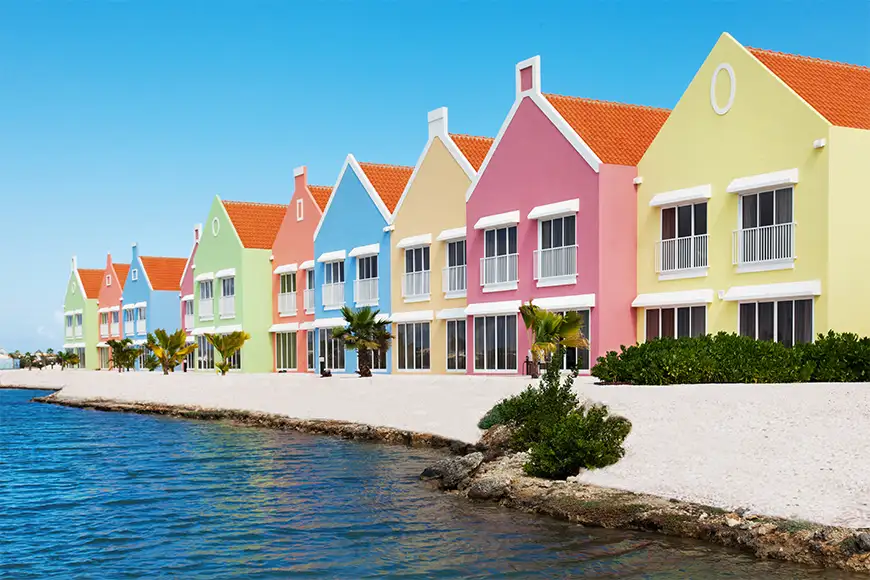
Hotels and resorts on Bonaire offer enough comfort and activities to bolster the island’s natural beauty, Dutch-Caribbean downtown, and accessible dive sites, rather than replace them. Very few Bonaire resorts have a beachfront (another reason to head off-resort daily) and instead offer pools. Most visitors come specifically to scuba dive at Bonaire National Marine Park, the oldest marine reserve in the world. Accordingly, many hotels offer dive packages or even entire dive programs.
One such option is the Courtyard Marriott Dive Resort Bonaire, a collection of lagoon-side pastel-colored buildings that look a bit like the setting of a Dr. Seuss book. It’s centrally located, popular among families and couples alike, and especially ideal for scuba diving thanks to its dive packages and on-site dive shop and scuba team, Dive Friends. If you’re not certified, you can sign up for beginner classes here to go shore diving, or to get certified. One of the island’s few sandy beaches (most are coral) is accessible via a free shuttle from the hotel. And repeat visitors are common here thanks to the fact that this is a scuba-centric hotel that also offers an infinity pool, hot tub, and an on-site Italian restaurant and bar, plus a new spa for add-on relaxation options like massages. One of the larger hotels on the island, the resort is 115 rooms—and during my stay all of the facilities were immaculately clean.
Other comfortable hotel options nearby include the popular Windhoek Resort and Divi Flamingo Beach Resort & Casino, and the new Delfins Beach Resort. The Plaza Beach & Dive Resort Bonaire can be all-inclusive, if you’re willing to pay more per night for food and drink.
When to Visit Bonaire, and How to Get Around
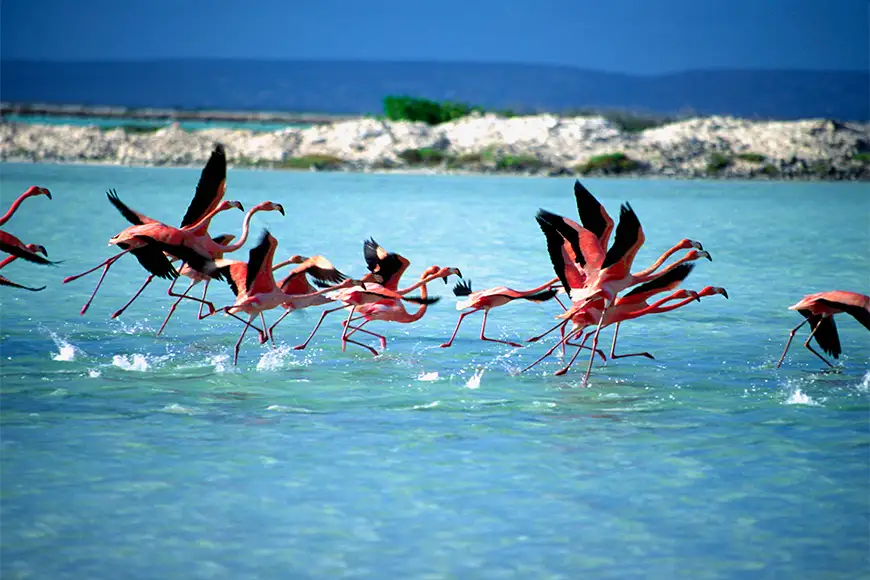
Like most Caribbean islands, Bonaire’s high season is November through April. I visited in October to enjoy a busy weekend of visitors for the locally beloved Regatta Bonaire weekend, which takes place annually and brings kite-surfers and sailors from near and far. Another consistently busy time of year is Karnaval (Carnival) celebrations of February and March and into early April. An island of just 18,000 residents, Bonaire transforms during festivals and when cruise ships land in port—adding buzz to the sometimes sleepy areas around the main city of Kralendijk, and upping the number of taxis that will be readily available in central areas.
Renting a car is ideal on Bonaire, but hotel guests heading downtown (just a few minutes away) for a night out can take advantage of the free hotel shuttle to the main stretch of gelato shops, restaurants, and bars by the waterfront. There’s also a shuttle service to the tiny Flamingo Airport, which is right next door—though the few daily arrivals don’t disturb the many nearby resorts as much as you might expect.
Packed onto this easily navigable island are many must-see sights and natural areas. With 20 percent of Bonaire’s land being protected natural reserves, there are multiple places to see the island’s famed pink national bird. And in the long-protected waters off Bonaire, it’s not uncommon to spot sea turtles and dolphins from land, plus colorful schools of reef fish, seahorses, sting rays, squid, and barracuda, if you opt to dive—which you should. Here are some of the best places to seek out on Bonaire, from vast salt flats to hilltop restaurants and snorkel-friendly beaches.
North Bonaire: Queen’s Highway for Scenic Views
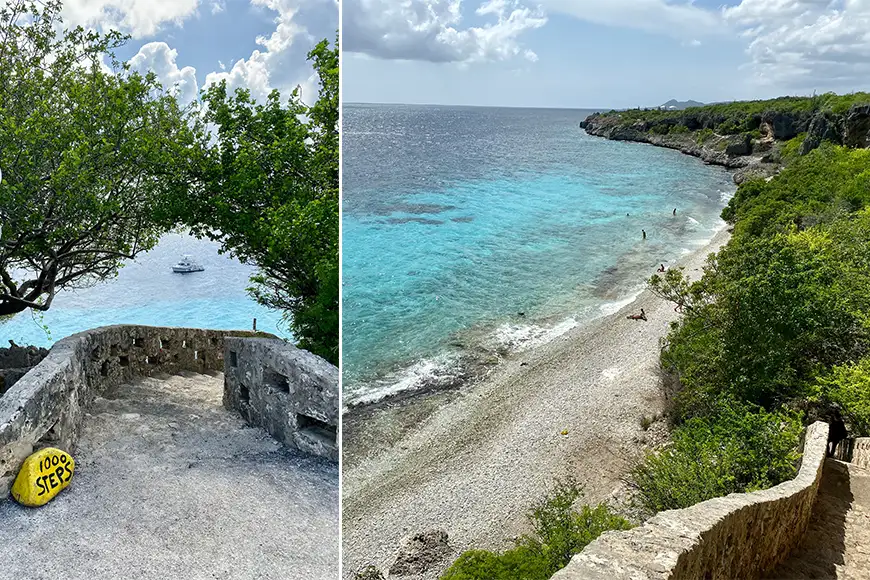
Shaped like a boomerang, Bonaire can be separated into north and south with downtown Kralendijk sandwiched in the middle. North Bonaire is where you’ll find some of the island’s most picturesque neighborhoods and vistas. The red-roofed villas just north of Kralendijk give way to many clifftop viewpoints you’ll spot along the road as you drive up the coast.
One of the most popular spots on the north side is 1,000 Steps Beach, named for its cliffside staircase (though it isn’t actually 1,000 steps) that descends to turquoise waters perfect for snorkeling and diving. Be sure to pause before heading downward to check the waves for any animals, like the two sea turtles a stranger pointed out to me while I was visiting. There are scuba entry points at 1,000 Steps Beach and all around the area that range from easy cliffside step ladders to more advanced shore-entry spots. To plan out a beach, snorkel, or scuba route, use a map-based guide to shore sites like this one from Tourism Corporation Bonaire; you’ll need it, as there are dozens of dive sites and 22 beaches (all public) to choose from.
Continuing north from 1,000 steps, you’ll find even more natural beauty, with rolling hills that lead up to the island’s highest peak in hike-friendly Washington Slagbaai National Park. At the edge of the park, Goto Lake is a vast scenic area that’s home to large flocks of flamingos and plenty of animals and plantlife. Bring binoculars to spot the neon-pink flamingos, which thrive in their protected environment and therefore won’t stick around if visitors approach them (unlike nearby Aruba’s flamingos that seek food from humans). Hikers can take the park’s rugged trail up to the top of Mount Branderis in about two hours round-trip; the peak affords views of nearby Venezuela across the sea on a clear day.
Not far from the park is the historic Spanish-Colonial town of Rincon, a cultural gem that’s home to a distillery and famous hilltop restaurant, Posada Para Mira. Stop for a meal at the homestyle establishment for iguana soup, homemade lemonade, and 360-degree views of the surrounding area. Posada Para Mira hosts live local music acts, and has played host to the Dutch royal family on their official visits to Bonaire. Adjacent to the restaurant is Echo parrot reserve, which offers educational walks. Down the hill in the colorful town is the Cadushy Distillery, where tourists can taste the local spirit—a limey liqueur made from fermented cacti.
Offshore: Idyllic Klein Bonaire
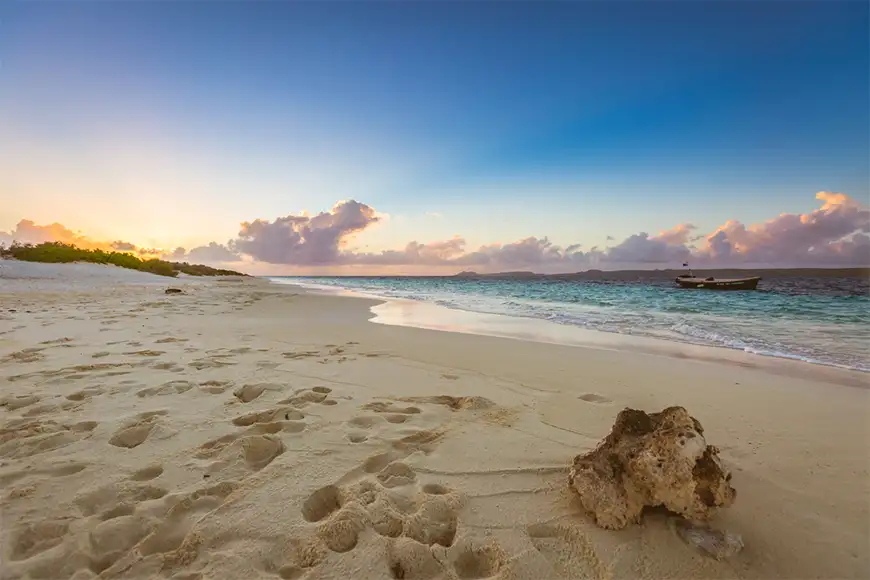
A visit to Bonaire isn’t complete without an offshore excursion to Klein Bonaire, or “Little Bonaire,” an uninhabited islet off the coast that’s perfect for snorkeling and rimmed by white-sand beaches. Klein Bonaire is just a water-taxi ride away from Kralendijk, or you can book a private dive boat or catamaran that typically includes rental gear and sometimes lunch. Just don’t forget your sunscreen and hat: Klein Bonaire is flat and vast, with the feel of a deserted island with little shade.
For divers, the underwater coral gardens off of Klein Bonaire are a biodiverse must-see. Many of the dive spots around Klein Bonaire are only accessible by boat, which is why you’ll want to book an offshore dive excursion, if not several. Named boat-only dive sites off Klein Bonaire include some of the best coral gardens in Bonaire, including beginner-friendly “Leonora’s Reef” for tunnel-shaped coral and calm waves, and intermediate “Forest” for its abundance of soft corals.
Downtown: Colorful Kralendijk
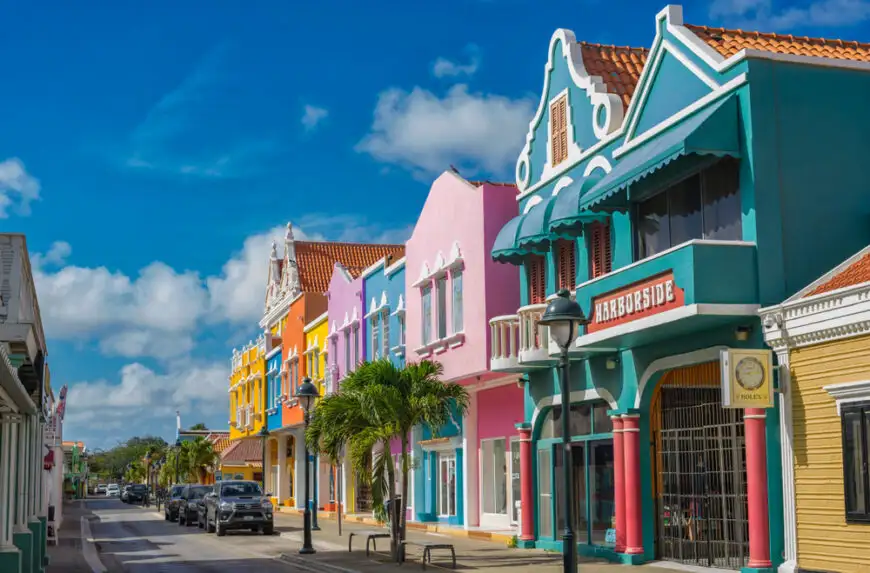
Most Klein Bonaire excursions depart from and conclude in downtown Kralendijk, which is the place to indulge in the island’s best food and nightlife. Enjoy colorful and authentic Mediterranean plates portside at the aptly named Mezze, or try Dutch-style beers at Bonaire Blond Brewery—which also has a lively open kitchen and garden patio in the back, called La Cantina, for romantic al fresco dining. A walk or short taxi ride from downtown is the upscale seafood restaurant Sebastian’s, which is frequented for waterfront dining with sunset views. In the opposite direction is locally beloved Coco Beach, a beach bar that serves dinner and stays open late—but is also a prime spot to lounge during the day.
Downtown Kralendijk also has plenty of Dutch-Caribbean architecture, street art, and coffee and gelato shops. During a lively festival weekend like the annual regatta, there are live music acts at an outdoor sound stage near the main Plaza Simon Bolivar—and you can’t miss it, thanks to the easily walkable size of the area.
South Bonaire: Lac Bay and Colorful Salt Flats
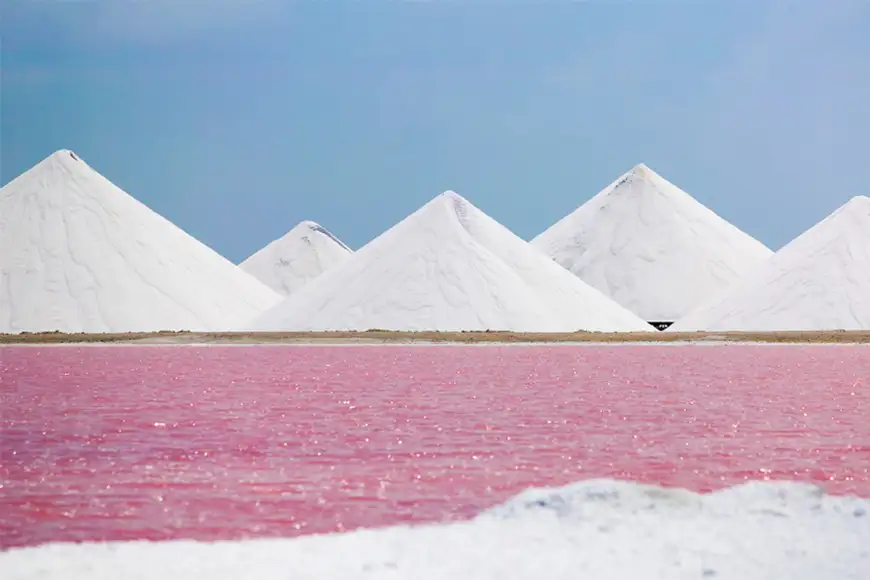
Another opportunity to see wildlife on Bonaire is the island’s Flamingo Sanctuary, located adjacent to the south side’s Cargill Salt Flats. The operation combines vast blue and pink salt flats with towering mountains of cultivated salt, located on an oceanfront public park. It’s also home to a preserved historic site: the Slave Huts remaining from the dozens of slaves who lived at the operation until the mid-1800s to pan valuable salt for the Dutch. The otherworldly landscape is a surprisingly historic part of Bonaire, and the Flamingo Sanctuary at the center of it all means you have a high chance of seeing flamingos from your car.
Kitesurfing is almost as popular as diving on Bonaire, and visitors can take a lesson from a local who happens to be an Olympian. Lac Bay’s Jibe City Surf School is co-owned by a wind-surfing gold medalist candidate for the 1984 Olympics, Svein Rasmussuen, who spent 10 years as a professional PWA kite surfer. Jibe City is located at the 20-room Sorobon Resort, which has a beach bar perfect for watching kite surfers fly from the waves.
More from SmarterTravel:
- What to Pack for the Caribbean: 35 Essentials
- 10 Best Caribbean Beaches for a Relaxing Escape
- Which Caribbean Island Is Right for You?
[viator_tour destination=”4308″ type=”3-mod” tours=”118235P6,61329P3,30240P5″]
SmarterTravel’s Shannon McMahon visited Bonaire as a guest of the Courtyard Marriott Dive Resort Bonaire and Tourism Corporation Bonaire. Follow her adventures on Instagram @shanmcmahon.
We hand-pick everything we recommend and select items through testing and reviews. Some products are sent to us free of charge with no incentive to offer a favorable review. We offer our unbiased opinions and do not accept compensation to review products. All items are in stock and prices are accurate at the time of publication. If you buy something through our links, we may earn a commission.
Related
Top Fares From
Today's Top Travel Deals
Brought to you by ShermansTravel
France: 8-Night Paris, Avignon & Nice...
Infinity Worldwide Vacations
 vacation
$2880+
vacation
$2880+
Poconos: 3 Nts in Garden of...
ResortsAndLodges.com
 hotel
$305+
hotel
$305+
7-Nt Canada & New England Cruise,...
Princess Cruises
 cruise
$839+
cruise
$839+
